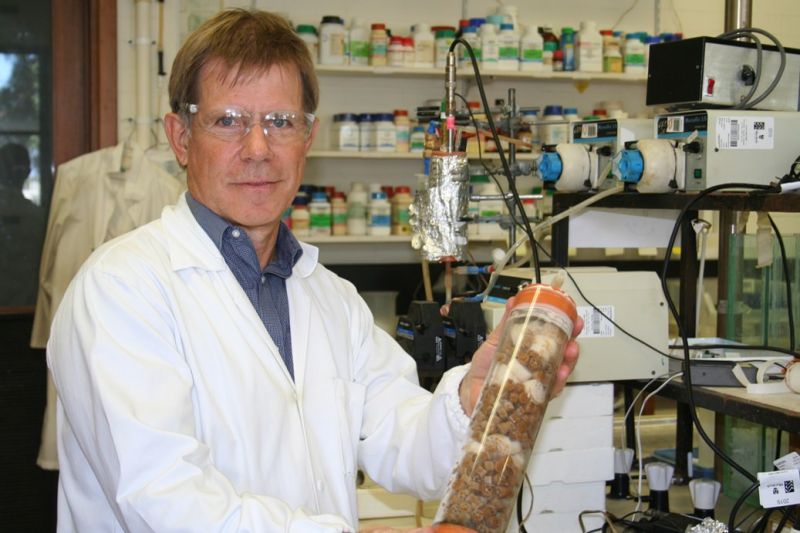Scientists Invent Cheaper and Greener Wastewater Treatment
Published on by Water Network Research, Official research team of The Water Network in Academic
A new energy-efficient process developed at Murdoch University is set to revolutionise wastewater treatment by significantly reducing the industry's electricity consumption.
By Paige Berdal

Super sludge: Dr Ralf Cord-Ruwisch shows the bacteria which break down organic matter in our wastewater.
Source: Murdoch University
Dr Ralf Cord-Ruwisch and Dr Liang Cheng, together with two Phd students Raffael Falvigny and Iqbal Hossein have designed a new wastewater treatment system that requires less than half the electricity to operate, and a new company is being formed to commercialise the technology.
With current wastewater treatment technology in Australia more than 100 years old, Dr Cord-Ruwisch believes the time is right for a more energy-efficient approach.
“At present, the majority of the electricity consumed by the nation’s wastewater treatment plants is used to oxygenate wastewater as part of the treatment process, and this design has the potential to revolutionise this,” Dr Cord-Ruwisch said.
“Not only can we offer significant operational savings for water utility operators by reducing the volume of electricity required by at least 50 per cent, but this new process could also dramatically lower the carbon footprint associated with treating our wastewater.”
Dr Cord-Ruwisch said gaining a deeper understanding of the bacteria which break down and process organic waste in the water, was an important first step in developing the new system, which is designed around these naturally-occurring, useful bacteria.
“All the hard work of breaking down organic matter in wastewater is carried out by a range of live bacteria, which can be cultivated in a form we refer to as 'biofilm' during the treatment process,” Dr Cord-Ruwisch explained.
“Like humans, these living bacteria require oxygen to function and survive, and in traditional treatment plants, a lot of electricity is used in pumping air bubbles through the wastewater to allow this bacteria to ‘breathe’.
“This is not a very energy-efficient process, as these air bubbles are only about 20 per cent oxygen and the rest of it is nitrogen, which isn’t required.”
The research team believed there had to be a more efficient way of delivering oxygen to these water-dwelling bacteria than sending air bubbles to them through the wastewater.
“As humans, we don’t fill our lungs up with water and then pump air bubbles into them to receive oxygen, we simply breathe the air directly into our lungs. Why should the way the bacteria take in oxygen be any different?” Dr Cord-Ruwisch said.
The new treatment plant design operates on the concept of 'passive aeration', whereby the water is drained from the treatment reactors, leaving the bacteria behind on a supported 'biofilm' and exposing them directly to the open air for a period of time.
This exposure allows the bacteria to take in the required amount of oxygen to function, before they are re-submerged in the wastewater to absorb and store more pollutants.
“This is similar to the way in which a whale floats on the surface of the water, taking in enough oxygen from the air into its lungs to sustain itself before it submerges,” Dr Cord-Ruwisch said.
The bacteria can then continue their work of removing organic carbon and nitrogen pollutants from the wastewater in a way that produces substantially less greenhouse gases, odours and sludge.
With a provisional patent on the process, the team has formed a company that has aspirations to fabricate the processing plant on an industrial scale and is currently seeking partners to commercialise the technology.
Source: Murdoch University
Media
Taxonomy
- Wastewater Disposal
- Industrial Wastewater Treatment
- Technology
- Wastewater Treatment
- Reuse
- Energy
- Energy Efficiency
- Organic Chemicals
- Renewable Energy